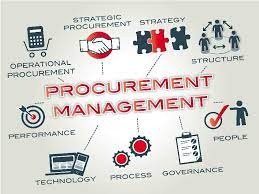A project management plan provides stakeholders and end-users with a roadmap for the execution of a future project. While putting it together takes time, the end result is worthwhile. It aids in risk reduction, creating buy-in, gathering your team’s expertise, aligning communication, and ensuring resource availability. This guide outlines what a project management plan is, the phases involved, its example, and its benefits, and then offers an easy step-by-step guide on how to create one.
What Is a Project Management Plan?
A project management plan is a collection of documents that detail the how, when, and what-ifs of project execution. It describes the project’s value proposition, execution phases, resources, communication tools and protocols, risks, stakeholders (and their responsibilities), and deliverables. Its materials comprise an executive summary, Gantt and team charts, risk assessment, and sub-plans for communication and resource management.
What Is a Project Management Plan Used For?
A well-written, well-structured project plan document is the only way to gain a complete grasp of your project.
In contrast to the project charter, which is a high-level strategy for the program, your project management plan deconstructs that high-level perspective into the practical day-to-day operation of your project, covering everything you must do in order to meet your project objectives.
Everything from timeframes to budgets, resources to deliverables, and more will be detailed in a comprehensive project plan, giving you a road map of what has to be addressed that you can use to manage and assess your project.
The Importance of Project Management Planning
There’s a lot of planning that goes into every excellent project.
As a project manager, you’ll have a lot on your plate at any given time. Your project plan removes the guesswork by demonstrating exactly what you should be focusing on each step of the way; where your resources and attention should be directed; and what you should be on the lookout for to ensure things don’t become late or over budget.
The work you undertake upfront in developing a project plan will serve you well throughout the project’s lifecycle, allowing you to focus your efforts entirely on delivering outcomes rather than trying to figure out what to do next.
Here are five advantages that demonstrate the significance of project management planning.
#1. It provides a starting point for your project.
Based on the authorized project charter, your project plan will describe the agreed-upon scope, timeframe, and budget for your project.
Once these baselines have been determined, specified, and accepted by the project sponsor, you will be able to compare the actual progress of your project to the predicted progress.
This is extremely useful since it means that no matter what stage of your project you’re in, you can rapidly assess whether you’re delivering as intended — and what you need to do to correct course if you aren’t.
#2. It ensures project alignment (and eliminates confusion).
No surprises or alarms: with your project described in a project plan, everyone knows what to anticipate and when.
While your project charter ensures that you, your stakeholders, and the project team are all on the same page, your precise project plan ensures that there is no room for error or confusion by outlining the exact due dates and deliverables so that everyone can plan accordingly.
#3. It completely defines the project’s scope.
Another advantage of alignment is that it prevents scope creep. It’s easy to discover out-of-scope items when your stakeholders’ expectations and all agreed-upon deliverables are clearly written out in the project plan document.
And, maybe more crucially, it makes it easier to address them. That’s because you have a written document or project planning sheet to refer to during conversations, so everyone is reminded of what they initially agreed to and there’s no misunderstanding about what’s in (or out of) the scope of the project.
#4. It enables better-resourced project management.
When you start breaking down the labor of the project into manageable chunks like deliverables, milestones, and tasks, it becomes much easier to see what kind of resources you’ll truly need to get it done.
Again, while you may have begun to articulate this at a basic level in your project charter, your project plan is where you become more particular about how you intend to use the resources at your disposal.
#5. It boosts your project’s confidence.
A detailed project plan can assist reassure your project sponsor, stakeholders, and project team (and, let’s be honest, you if you’re having a really awful day) of where you’re headed and why.
Because it allows everyone to understand how all of the work comes together to progress the project’s — and, by implication, the organization’s — goals, your project plan document boosts confidence in your leadership as a project manager.
Things You Need to Know Before Writing a Project Plan
Take a few minutes to prepare before you begin crafting your plan. Defining what is at stake if the project fails, identifying the milestones required for successful completion, selecting key talent to complete your project, selecting and signing up for the tools that will make the plan creation process easy and efficient, and defining the end beneficiary of your project are all examples of how to do so. Each of these preparation processes is discussed in greater detail below.
#1. Risk Assessment of Failure
Defining what would happen if the project was not completed successfully might help you later as you inspire your execution team and develop your plan and the value proposition for your project. This viewpoint emphasizes the significance of each stakeholder’s participation.
#2. Identifying Milestones
Defining the milestones for which they will be responsible is one method to ensure you select the right team members for plan design and execution. Once the milestones have been determined, you may identify the required expertise and then the talent who possesses that skill.
#3. Talent Identification
It is critical to gain expertise from the team members who will carry out your strategy as you create it. This could spell the difference between your project’s success and failure. Identifying these stakeholders now allows you to involve them earlier in the planning process, resulting in more collective knowledge.
#4. Choosing a Tool
You will need to use charts, graphs, and reports to record the relevant information when planning your project. Graphic design applications such as Canva and project management software can be useful.
#5. Identifying the Beneficiary or End-User
Nothing can prepare you for project completion success like understanding what the end-user or project beneficiary requires in the final deliverable. Understanding this necessitates comprehension of the end-user or recipient. Before you begin planning a project that will impact and, perhaps, delight them, take some time to listen to their needs, goals, and hopes.
How to Create a Project Management Plan
We are now in the process of developing a project management strategy, which includes the following steps:
Step #1. Create a High-Level Template for Project Planning
What does a project plan look like in your organization? When designing a project strategy, it is a good idea to start with any existing resources that may be used as a reference, such as project plan examples or project plan templates.
Use any resources your firm has, such as a high-level template for project planning, a project planning spreadsheet, model plans, or a calendar for project preparation.
Step #2. Define Your Project Objective
There are numerous free templates and samples available to assist you with your preparation, but remember to use the one that is appropriate for your project type.
Your project management plan should be tailored to the specifics of your project, staff, and demands. IT project plans for new equipment rollouts, for example, will very certainly differ from agile project plans, which will almost certainly differ from more extensive strategic project plans.
Gantt charts, task lists, and other project management aspects may assist you in ensuring the effectiveness of your strategy.
Step #3. Identify All Stakeholders
Once you’ve completed your project overview, you must identify the main stakeholders in the project’s success. As a result, it is critical to gather all of your requirements. After gathering this information, you must define the project’s scope for each stakeholder and specify specific deliverables. Good communication skills are essential to master this stage of project management.
Step #4. Get Feedback From Your Customers, Project Stakeholders, and Team Members
When the time comes, a strategy designed in a vacuum is less likely to receive the backing it needs. If you include your stakeholders in the project planning process, they will feel more involved, and it will set the tone for an integrated team atmosphere that will benefit your project.
When developing a project plan, make sure to solicit feedback from the project’s main characters, whether through a planning meeting, a brainstorming session, or a one-on-one interview. Also, as an added bonus? It’s a good opportunity to continue building relationships with important stakeholders that you started throughout the stakeholder and project charter and analysis.
Step #5. Any Previous Project Management Planning You’ve Done Should Be Included
If you’ve already completed stages 1-5 of project planning, you should include the outcomes of those steps, as well as any research you’ve done up to this point, in your project management plan.
The following project management strategies are recommended by the Project Management Institute’s Project Management Body of Knowledge Guide and Standards:
- Plan for scope management
- Plan for the management of requirements
- A strategy for time management
- A cost-cutting strategy
- Plan for quality control
- A strategy for managing resources
- A strategy for managing communications.
- A strategy for risk management
- The procurement strategy
- Stakeholder outreach strategy
Even if they aren’t exhaustively recorded, each of these topics should be addressed at some time during your project management planning.
Step #6. Choose a Central Location for Your Project Management Strategy
Your project management plan, including your project charter, should be kept centrally so that it is immediately accessible to all parties involved, including stakeholders, team members, management, and clients.
How Is Project Management Different From Financial Management?
Project management encompasses all of the processes required to manage a project from its inception to its completion, ensuring that organizational goals and stakeholder demands are satisfied.
Financial management is concerned with managing resources and financial operations in order to increase profit while meeting the organization’s and stakeholders’ objectives as quickly as possible and satisfactorily.
What Are the 5 Components of Project Management Plan?
The five basic phases of the project management process are as follows:
- Project Initiation.
- Project Planning.
- Project Execution.
- Project Monitoring and Controlling.
- Project Closing.
How to Create a Project Management Plan?
Included in how to construct a project management strategy are:
- Step 1: Identify the goal of the project.
- Step 2: Map out the scope
- Step 3: Develop an outline or plan.
- Step 4: Share this initial idea with your team.
- Step 5: Finalize your plan
- Step 6: Use a Gantt chart to keep things organized
- Step 7: Distribute your project management plan.
What Is the Main Purpose of a Project Management Plan?
A project management plan’s objective is to act as a guide for the execution and control phases. The project plan contains all of the information required for the execution phase, including the project’s goals, objectives, scope of work, milestones, risks, and resources.
What Is a Project Plan Format?
A project plan template is a document that establishes a consistent format for a project plan. It often includes a list of the project’s important aspects, such as stakeholders, scope, dates, anticipated cost, and communication mechanisms. Typically, the project manager lists the information based on the task.
What Is the Structure of a Project Plan?
A statement of work, a resource list, a work breakdown structure, a project timetable, and a risk plan are common components of a project plan. One of the important success criteria for projects is having a well-developed project plan.
Is a Gantt Chart a Project Plan?
A Gantt chart is a horizontal bar chart that is used in project management to visually illustrate the progress of a project plan across time. Gantt charts often illustrate the timing and status of each item in the project, as well as who is responsible for them.
What Makes a Good Project Plan?
The process of defining your objectives and scope, goals and milestones (deliverables), and assigning tasks and budgeted resources for each phase is known as project planning. A good plan is easily shared with everyone concerned, and it is most beneficial when examined on a regular basis.
What Is Project Plan Checklist?
A project checklist is a list of the steps needed to finish a project successfully. These steps concentrate on the phases of planning and setup. Using a checklist assists teams in adequately preparing for future project work.
Bottom Line
The first crucial step in assuring excellent project execution and completion is to develop a project management plan. Without it, you risk project derailment, overspending, an unmet value proposition, and potentially disgruntled end users. It provides buy-in, resource availability, budget adherence, a high-quality and expertly-driven final delivery, and a satisfied end-user. We hope that this guidance puts you on track to reap all of these benefits.
Related Articles
- Project Cost Management: How to Create a Cost Management Plan
- What is Project Risk Management? Steps in Creating a Risk Assessment Plan
- Project Scope Management: Definition & Scope Management Plan Examples
- Project Quality Management Planning Guide (Tools & Software)






